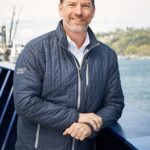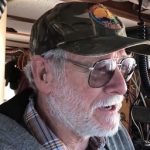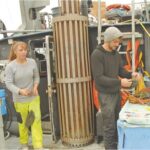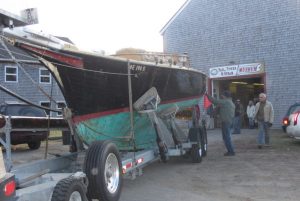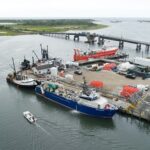Tag Archives: Alaska Department of Environmental Conservation
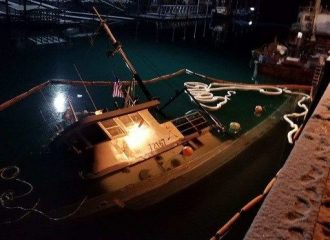
Fishing vessel sinks, leaks fuel in Seward Harbor
The weekend sinking of a fishing vessel in the Seward Harbor has prompted a cleanup effort as plans to salvage the vessel unfold. The Alaska Department of Environmental Conservation said in a report that it is monitoring the response to the Nordic Viking, which sank at the “T-dock” in the Seward Harbor and was reported to DEC Sunday by the local harbormaster. It’s not clear why the ship sank. >click to read<17:44
Declared unfit for human or animal consumption – Eighty tons of contested Bristol Bay salmon trashed in Anchorage landfill
 Some 158,318 pounds of highly contested Bristol Bay salmon from the F/V Akutan have reached their final destination: the Anchorage landfill. This summer, the custom processor was supposed to process up to 100,000 pounds of salmon a day for Bristol Bay Seafoods LLC, a small group of fishermen. But nearly everything that could go wrong did. The vessel’s owner went broke, the crew wasn’t paid, and when 158,318 pounds of fish came off the boat in early September, the third-party testing group NSF declared it unfit for human or animal consumption. click here to read the story 09:17
Some 158,318 pounds of highly contested Bristol Bay salmon from the F/V Akutan have reached their final destination: the Anchorage landfill. This summer, the custom processor was supposed to process up to 100,000 pounds of salmon a day for Bristol Bay Seafoods LLC, a small group of fishermen. But nearly everything that could go wrong did. The vessel’s owner went broke, the crew wasn’t paid, and when 158,318 pounds of fish came off the boat in early September, the third-party testing group NSF declared it unfit for human or animal consumption. click here to read the story 09:17
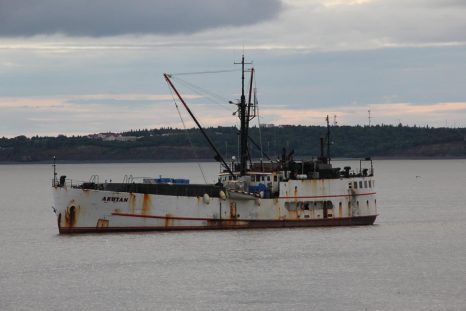
Unified command established in response to potential sinking of fishing vessel Akutan
The U.S. Coast Guard, the Alaska Department of Environmental Conservation and the city of Unalaska established a unified command in response to potential pollution from the fishing vessel Akutan near Unalaska, Alaska, Friday. Personnel from Coast Guard Sector Anchorage, the State of Alaska, the city of Unalaska and Resolve Marine Services, a salvage and repair company, are coordinating and overseeing the removal of environmental hazards, including anhydrous ammonia and various petroleum products onboard the fishing vessel Akutan. The unified command determined the steps taken by the vessel owner and operator as inadequate to prevent a potential pollution incident. The approximately 166-foot fishing vessel began transiting to Dutch Harbor from Bristol Bay earlier this month. Due to various mechanical issues the vessel anchored in Captains Bay where it remains, deteriorating. click here to read the press bulletin 12:36
Coast Guard responds to report of 4 fishing vessels taking on water near Dillingham, Alaska
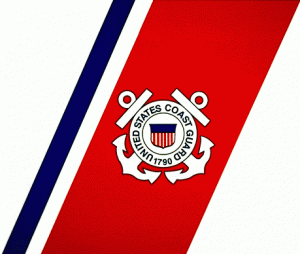 The Coast Guard is responding to a report of four fishing vessels taking on water Monday in vicinity of Nushagak Bay near Dillingham. Coast Guard Sector Anchorage received a report Monday morning that four commercial fishing vessels engaged in salmon fishing began taking on water and became partially submerged in separate incidents. Three good Samaritan vessels and crews recovered all people safely from the four fishing vessels. There is a report of a diesel sheen around one of the fishing vessels that is partially submerged. There are no reports of injuries. “We are working closely with the Alaska Department of Environmental Conservation, Alaska Fish and Game and the Bristol Bay Native Association to mitigate any potential harm to the environment,” said Capt. Sean Mackenzie, Federal On-Scene Coordinator, commander for Sector Anchorage. The cause of the incidents is under investigation. For inquiries related to the salmon fisheries contact Lisa Krebs-Barsis, Aleutians/Western Alaska Unit Supervisor, Prevention, Preparedness and Response Program, ADEC, at 907-269-8487 (office); 907-542-5798 (cell). -USCG-
The Coast Guard is responding to a report of four fishing vessels taking on water Monday in vicinity of Nushagak Bay near Dillingham. Coast Guard Sector Anchorage received a report Monday morning that four commercial fishing vessels engaged in salmon fishing began taking on water and became partially submerged in separate incidents. Three good Samaritan vessels and crews recovered all people safely from the four fishing vessels. There is a report of a diesel sheen around one of the fishing vessels that is partially submerged. There are no reports of injuries. “We are working closely with the Alaska Department of Environmental Conservation, Alaska Fish and Game and the Bristol Bay Native Association to mitigate any potential harm to the environment,” said Capt. Sean Mackenzie, Federal On-Scene Coordinator, commander for Sector Anchorage. The cause of the incidents is under investigation. For inquiries related to the salmon fisheries contact Lisa Krebs-Barsis, Aleutians/Western Alaska Unit Supervisor, Prevention, Preparedness and Response Program, ADEC, at 907-269-8487 (office); 907-542-5798 (cell). -USCG-
For the third consecutive year, testing finds Alaska seafood free of Fukushima radiation
 The Alaska Department of Environmental Conservation said in a statement that seafood samples from Alaska waters in 2016 tested negative for three Fukushima-related radioactive isotopes: iodine-131, cesium-134 and cesium-137. The findings for the tested species – including king, chum, sockeye and pink salmon, as well as halibut, pollock, sablefish, herring and Pacific cod – matched those from 2014 and 2015. “Fish species were chosen for testing based on their importance to subsistence, sport, and commercial fisheries and because they spend part of their life cycle in the western Pacific Ocean,” DEC officials wrote. “Samples of fish were taken by DEC environmental health officers during regular inspections of commercial fishing processors throughout the state.” Department spokeswoman Marlena Brewer said that the samples were tested at DEC’s Environmental Health Laboratory in Anchorage, using portable gamma-ray analysis equipment provided by the U.S. Food and Drug Administration. Click here to read the rest 18:26
The Alaska Department of Environmental Conservation said in a statement that seafood samples from Alaska waters in 2016 tested negative for three Fukushima-related radioactive isotopes: iodine-131, cesium-134 and cesium-137. The findings for the tested species – including king, chum, sockeye and pink salmon, as well as halibut, pollock, sablefish, herring and Pacific cod – matched those from 2014 and 2015. “Fish species were chosen for testing based on their importance to subsistence, sport, and commercial fisheries and because they spend part of their life cycle in the western Pacific Ocean,” DEC officials wrote. “Samples of fish were taken by DEC environmental health officers during regular inspections of commercial fishing processors throughout the state.” Department spokeswoman Marlena Brewer said that the samples were tested at DEC’s Environmental Health Laboratory in Anchorage, using portable gamma-ray analysis equipment provided by the U.S. Food and Drug Administration. Click here to read the rest 18:26
SitNews) Ketchikan, Alaska Unified Command continues investigation of oiled wildlife
SitNews) Ketchikan, Alaska – The Unified Command – consisting of the Coast Guard, the Alaska Department of Environmental Conservation and communities of Gambell and Savoonga – continues to investigate the reports of oiled wildlife on the coast of St. Lawrence Island. The Coast Guard, ADEC and the U.S. Fish and Wildlife Service deployed investigators to St. Lawrence on Friday to work with local guides to conduct shoreline assessments.http://www.sitnews.us/1112News/111312/111312_oiled_wildlife.html



































